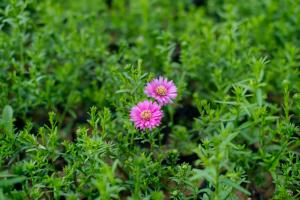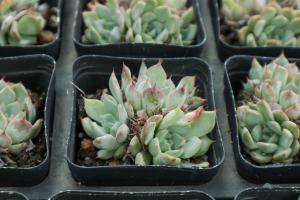Why Are My Tomato Plant Stems Purple?
Tomatoes are one of the most popular vegetables grown in gardens all around the world. However, despite being a relatively easy plant to grow, gardeners often face various issues such as pests, diseases, and environmental factors that can affect the health and growth of their tomato plants. One of the most common issues that tomato growers face is purple stem syndrome, where the stems and leaves of the plants turn a deep shade of purple.
What Causes Purple Stem Syndrome?
There are several reasons why your tomato plant stems could turn purple. One of the most common reasons is because of an environmental factor, such as a drop in temperature. When exposed to cold temperatures, the tomato plant produces anthocyanins, which are pigments that create the purple coloring in the stems and leaves of the plant. Excessive sunlight or heat can also lead to purple stems as it affects the plant's ability to transport nutrients properly. Moreover, certain pathogens like Fusarium or Verticillium wilt can cause discoloration to the tomato plant's tissue.
How Can You Treat Tomato Plant Stem Discoloration?
If the purple discoloration is due to an environmental factor, there isn't much that can be done except to wait for the temperature or other factors like excessive sunlight to stabilize. However, if the plant has been affected by a disease like Fusarium or Verticillium wilt, it's essential to remove the diseased plant and dispose of it immediately to prevent the spread of disease to other plants in the garden. Also, you should consider planting your tomato plant in a different area of your garden to avoid re-infecting the soil.
How Can You Prevent Tomato Plant Stem Discoloration?
Prevention is always better than cure when it comes to gardening. Here are some tips to prevent purple stem syndrome:
Make sure the soil is well-drained and has enough nutrients to support the growth of the plant.
Protect your tomato plants from extreme temperatures by moving them to a warmer area or using a fence or gardening cloth to create shade.
Water regularly as tomato plants require a steady supply of water to grow properly.
Clean gardening tools and pots to avoid the spread of disease.
Conclusion
Purple stem syndrome in tomato plants is an issue that can affect the health and growth of your plants, but it's not always a cause for alarm. Environmental factors such as cold temperatures or excessive sunlight can cause discoloration, while pathogens like Fusarium and Verticillium wilt can cause damage to the plant's tissue. However, prevention is always better than cure in gardening, so take the necessary steps to prevent this issue from happening before it even starts. Stay vigilant, take care of your plants, and you'll be rewarded with a bountiful harvest of delicious tomatoes come harvest season.

 how many times do yo...
how many times do yo... how many planted tre...
how many planted tre... how many pine trees ...
how many pine trees ... how many pecan trees...
how many pecan trees... how many plants comp...
how many plants comp... how many plants can ...
how many plants can ... how many plants and ...
how many plants and ... how many pepper plan...
how many pepper plan...





























